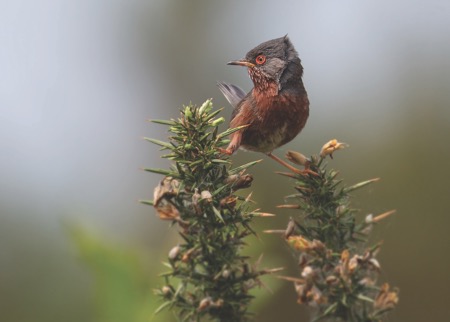Surrey Wildlife Trust
Cranleigh Waters community river project launches
02/08/18 10:48 Filed in: What's On
Surrey Wildlife Trust to recruit local volunteers
Surrey Wildlife Trust, in partnership with the Environment Agency and Thames Water, has begun a three year project to restore the Cranleigh Waters river, to improve wildlife habitat and river flow. With funding from Thames Water, the project aims to reconnect the local community with their river through monitoring and restoration days.Volunteers from Surrey Wildlife Trust, the Environment Agency and the local community gathered to do a mass water sample of the Cranleigh Waters in July to obtain baseline ecological data for the project. With 20 volunteers taking kick samples, the sampling covered a long stretch of river counting invertebrates such as mayflies, which are a good indicator of water quality.
The survey found that while water quality was variable the habitat was in poor condition due to past modifications of the river. A healthy river maintains a channel that is constantly flowing however at the Cranleigh Waters the river is too wide in many places, so the river flows very slowly and drops silt on the bed which smothers the in-stream habitat.
In addition the steep banks of the widened river cannot support the vegetation you would normally expect to find which is essential for fish and invertebrates. Thick vegetation along the banks of rivers not only provides a wildlife corridor for mammals, such as, water voles and bats, it also prevents soil running off into the river, keeping pesticides and fertilisers away from the watercourse.
Glen Skelton, wetland landscapes officer at Surrey Wildlife Trust, said: ‘Our survey helps us to understand where the issues may be and develop a plan to enhance water quality with good river habitat management. What this river needs is some love, so by reconnecting the community of Cranleigh back to their river, it will give it the best chance of improvement.’
Adrian Clarke, Cranleigh resident who took part in the water sampling, said: ‘The river brings a sense of identity with the local village and a number of local residents were concerned that it was being neglected. So we are delighted to be working with Surrey Wildlife Trust to improve our river. It was an enjoyable day doing the mass sampling and we found a number of species: shrimps, mayflies, olives and stone loach. I had no idea what a caddisfly larva was before the training, it has been fascinating.’
For the next step Surrey Wildlife Trust would like to recruit local volunteers, with wellies at the ready, to regularly monitor the river and the wildlife that lives there. Volunteer training will be available in late August and early September. To find out more about the project or to volunteer contact glen.skelton@surreywt.org.uk or visit surreywildlifetrust.org/volunteering
Celebrating Surrey’s wild heathland landscape
25/07/18 10:08 Filed in: What's On

Surrey Wildlife Trust and Thames Basin Heaths Partnership welcome local people to celebrate Surrey’s amazing wild heathland landscape during Heath Week 2018, from 29 July to 4 August 2018.
Surrey offers thousands of acres of vast heathland wilderness blooming with bright pink bell heather and Heath Week offers a programme of walks, talks and events to encourage everyone to explore this stunning wild landscape.Join Surrey Wildlife Trust for a walk at Chobham Common, the largest national nature reserve in the south east of England, to discover its amazing wildlife. During an evening walk people will hear nightjars churring, the mysterious migratory bird that breeds on the Common during the summer months. Other creatures of the night, such as roding woodcock, owls and bats may be heard using bat detectors on an evening walk at Ockham Common.
Dr Mike Simmonds of University of Reading will take visitors on a journey from the Ice Age to the present day at Chobham Common, a story which has been preserved in the peat for over a thousand of years. He will reveal how the vegetation and climate have changed and what life may have been like for the prehistoric people that inhabited this dynamic landscape.
Leigh Thornton, estates manager for Surrey Wildlife Trust, said: ‘With the amazing weather this summer, it has never been a better time for residents to enjoy what Surrey’s countryside has to offer. Sunshine and blue skies bring out the vibrancy of the pink heather and an abundance of wildlife that you will only see in the unique landscape of Surrey’s heaths.’
Other Heath Week events include a chance to meet dog behaviour specialists, the Surrey Amphibian & Reptile Group sharing the delights of rare reptiles, the Ministry of Defence talking about vital military training on heathlands near Farnham with the Fire and Rescue Service sharing how they are dealing with the current weather conditions, high risk of wildfires and fire prevention.
Sarah Bunce, senior warden for the Thames Basin Heaths Partnership, said: ‘If you live or work in Woking, Guildford or the surrounding areas, come and experience our wonderful heathlands. Many people don’t realise how lucky they are that a quirk of geology, climate and history has left these amazing landscapes preserved within Surrey. If it hadn’t been for factors such as extensive military activity or protection for rare ground nesting birds, these heathlands might not be here today for us all to enjoy.’
The annual event is designed to encourage local people to explore and appreciate the county’s vast wilderness of heathland, which spans areas between Farnham and Godalming in the south of the county to Woking and Camberley, Chobham and Cobham in the north. One of the most ancient and characteristic British landscapes, it has special conservation protection and provides a living link to our stone age past.
For further information about Heath Week 2018 or to book an event visit surreywildlifetrust.org/heath-week